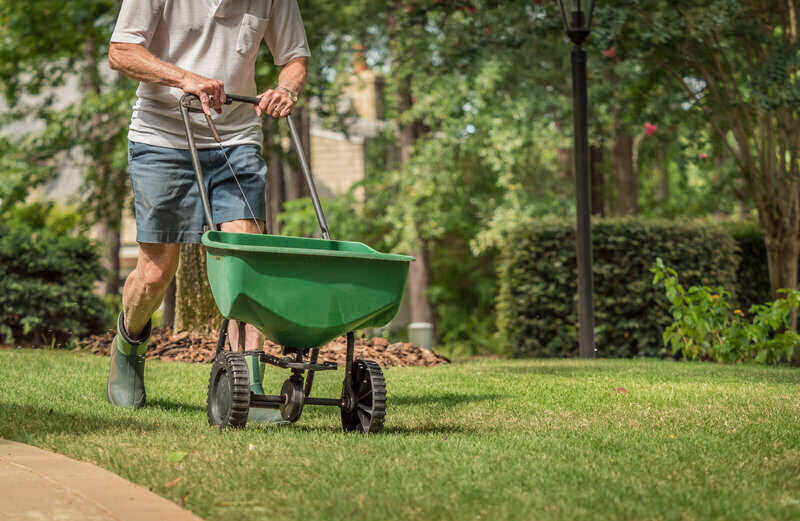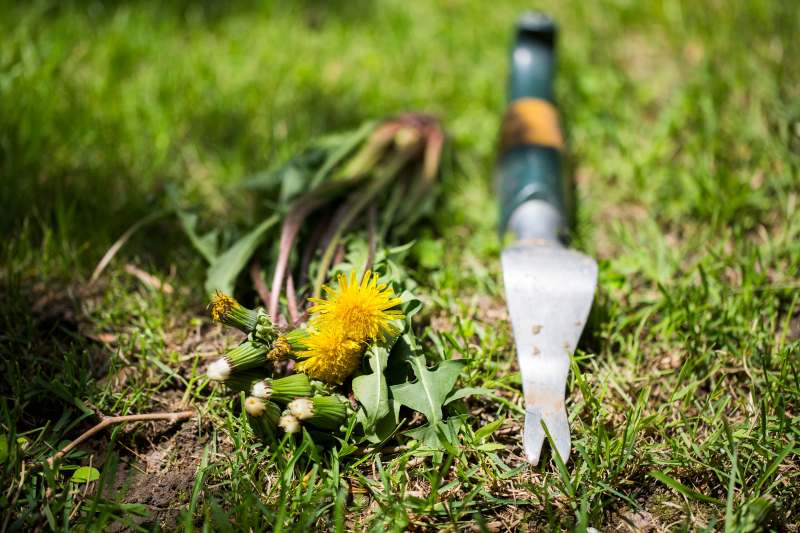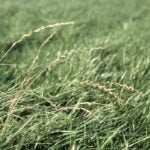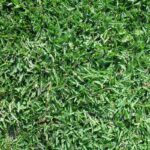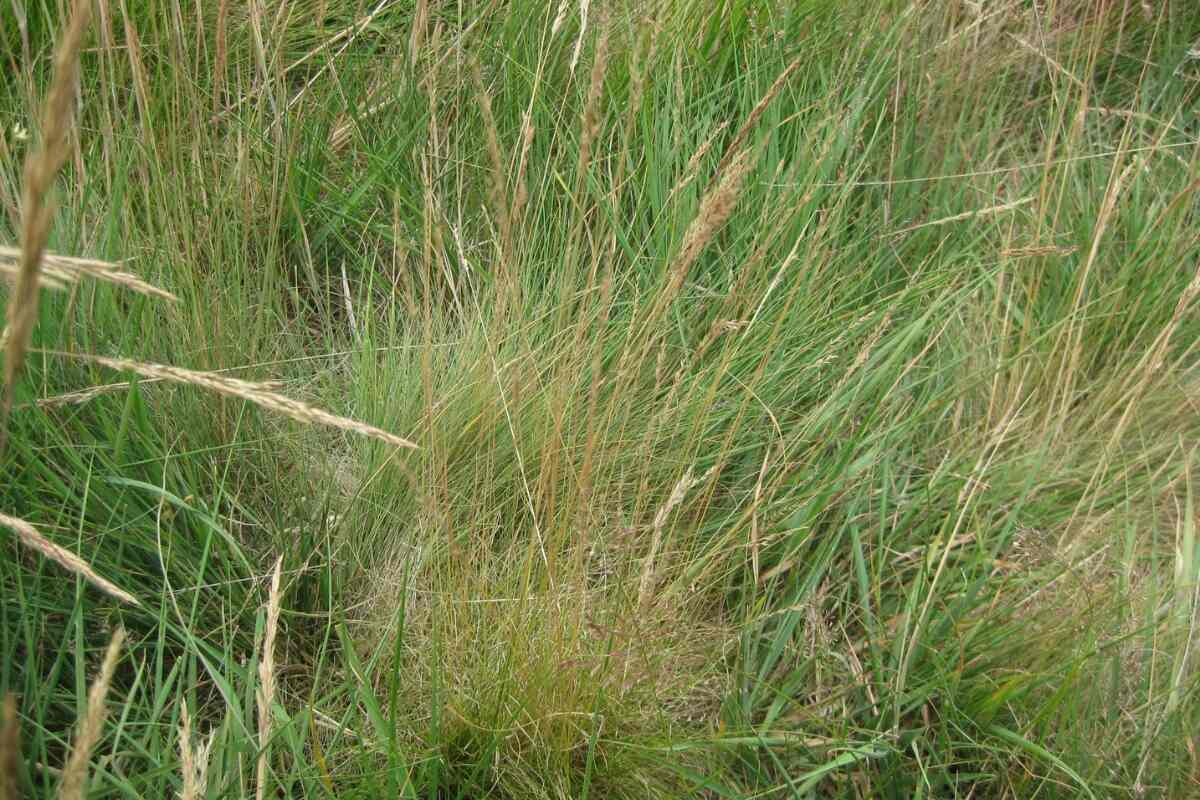
Dreaming of a meadow-like lawn that doesn’t need mowing or constant fertilizer? Or struggling with shaded areas where finicky, high-maintenance Kentucky bluegrass just won’t grow? Fine fescues may be the answer to your lawn needs. When you follow the tips mentioned in this guide to growing fine fescues, these low-maintenance cool-season lawn grasses grow beautifully in full sun to moderate shade and can be left natural.
If you’re a homeowner in a cool, humid climate, fine fescues are worth considering for your lawn.
Fine Fescue at a Glance
- Classification: Cool-season grass
- Spreads by: Bunch type grass mainly; creeping red fescue spreads by rhizomes
- Soil type: Well-draining; grows in sand and infertile soil
- Soil pH: 5.6-6.5
- Mowing height: 1 to 3 inches
- Shade tolerance: Moderate to high
- Drought resistance: Moderate to high
- Foot traffic tolerance: Low to moderate
- Maintenance needs: Low
- Potential for disease: Moderate
- Insect pest tolerance: Low to moderate; endophyte-enhanced types available for improved insect resistance
Other notes: While fine fescues have good drought tolerance, they quickly lose color in hot, dry conditions. Often used in a mix with other cool-season grasses to create a sun/shade blend. May thin over time and need overseeding.
The Basics of Fine Fescue
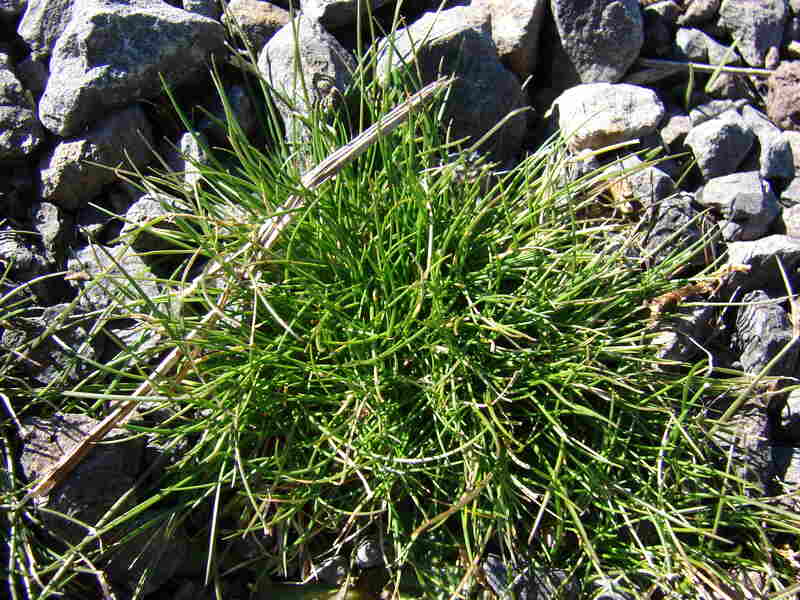
Fine fescues are a group of five similar-looking fine-textured grasses: Chewings fescue, hard fescue, sheep fescue, slender creeping red fescue, and strong creeping red fescue. These grasses have low maintenance requirements and great shade tolerance while feeling soft between your toes.
These easy-to-care-for grasses are commonly used to create cool-season grass blends for sun/shade mixed lawns. The fine fescues establish readily in shady areas, while the sun-loving grass type in the blend, such as Kentucky bluegrass, will die out in the shade but thrive in full sun spots.
Depending on your preference, you can mow fine fescues like you typically would or leave them naturalized to create a beautiful meadow-like yard that undulates and dances in the breeze. They prefer Northern areas where it’s cool and humid—especially the Pacific Northwest and New England—but some varieties have better heat tolerance and may grow successfully in the northern parts of the transition zone.
Different Types of Fine Fescue
There are five fine fescue grasses: Chewings fescue, hard fescue, sheep fescue, slender creeping red fescue, and strong creeping red fescue.
Chewings Fescue (Festuca rubra ssp. commutata)
This type is a light to darker green grass with the best shade tolerance among the five. It has a low to moderate nitrogen requirement and moderate tolerance to salt. Chewings fescue works well for homeowners in drought-prone climates with sandy, infertile soils or those in coastal areas.
Chewings fescue is sometimes used by golf courses for putting greens in the North; some cultivars can be cut as short as ¼ of an inch.
Hard Fescue (Festuca trachyphylla)
Hard fescue is known among the fine fescue types as relatively heat and drought-tolerant. It develops a wide, branching root system that allows the grass to withstand seasonally dry periods during summer.
Even with a low nitrogen requirement, you can expect this grass to develop a dark green-gray color. It has moderate shade tolerance and thrives in infertile soils. Hard fescue doesn’t tolerate salt, which isn’t good for coastal properties.
Sheep Fescue (Festuca ovina)
Sheep fescue is often used in home lawns and other landscape situations where there’s a desire not to mow or to mow infrequently. This fescue has a grayish-bluish color, is the most drought-tolerant of the fine fescue types, needs low nitrogen, and doesn’t like salty soils or water.
But if you’re looking for a wild, meadow-type look, it’s a great choice and grows well with wildflowers.
Slender Creeping Red Fescue (Festuca rubra ssp. litoralis)
Slender creeping red fescue is one of the two types with rhizomes that allow it to spread more easily. This light to medium-green fine fescue is the most salt-tolerant of all the types, so you often find it growing along salt marshes and coastlines.
It is more widely available in northern European countries and has a limited commercial market in the U.S. The grass is well-adapted to cool, moist climates and withstands low mowing heights, so it is commonly used for putting greens in northern Europe.
Strong Creeping Red Fescue (Festuca rubra ssp. rubra)
Strong creeping red fescue has a similar growth habit to slender creeping but with longer rhizomes and slightly darker medium green, fine-textured blades. It also prefers cool, humid weather and has moderate salt tolerance, so it is commonly grown in Europe, the Pacific Northwest, and the northeastern United States.
This creeping fescue is often included with Kentucky bluegrass and other fine fescue cultivars in cool-season grass blends.
Note: “Strong” creeping red fescue may suggest an improved cultivar. Sometimes this grass is referred to simply as creeping red fescue.
Pros And Cons Of Fine Fescue
Fine fescues are super low-maintenance, but they have their downsides, too. Consider the pros and cons before deciding if one of these grasses is right for your lawn.
Pros
✓ Moderate to high tolerance of partial shade; also tolerates full sun
✓ Different species offer various characteristics
✓ Doesn’t need frequent mowing
✓ Works well in cool-season mixes for sun-shade conditions
✓ Doesn’t spread aggressively
✓ Perfect for cool, humid climates
✓ Low nitrogen needs
✓ Some types have moderate to high salt tolerance (great for coastal climates and areas where road salts are a concern)
✓ Moderate to high drought resistance
✓ Grows well at high elevations
✓ Soft to walk on barefoot
Cons
✗ Not suitable for high-traffic areas
✗ May go dormant during the summer heat
✗ Susceptible to some diseases
✗ Excessive fertilizer contributes to high thatch levels
Understanding How Cool-Season Grasses Grow
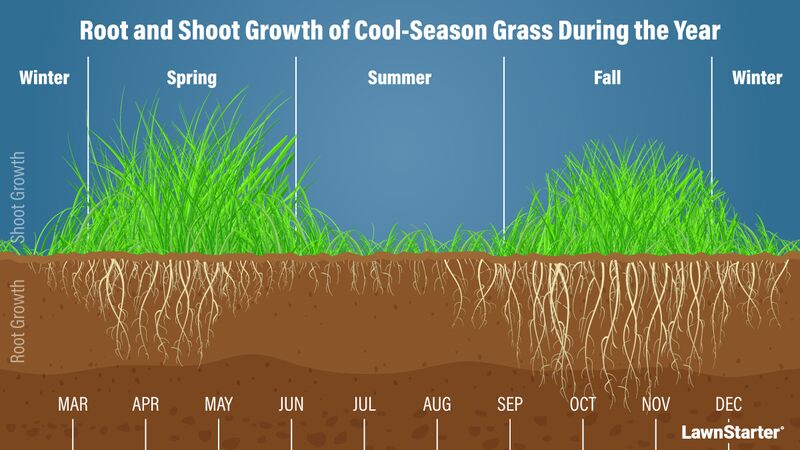
The most popular cool-season grasses are fine fescue, Kentucky bluegrass, perennial ryegrass, and tall fescue. These grasses grow across the northern US and uppermost parts of the transition zone. Compared to warm-season grass types, they are adapted to face colder winter temperatures but aren’t as equipped to stand up to summer heat.
Cool-season turfgrasses start growing when temps are above 40 to 42°F and grow wild when air temperatures are between 65 and 75°F. They may go dormant (instead of dying off) during the hottest part of summer, but growth takes off again in fall when temps dip. When October or November rolls around, they go dormant through the winter.
How Do You Establish Fine Fescue?
Fine fescue is mainly established via seeding, but you can purchase and install sod in some areas.
The Cost of Starting Fine Fescue
Fine fescue seed: Costs from $4 to $6 per pound. The seeding rate depends on the type you’re using, but expect to need 3 to 6 pounds of seed per 1,000 square feet.
- Grass Seed Options:
– Outsidepride Legacy Fine Fescue Grass Seed (5 lbs.)
– Eretz Creeping Red Fine Fescue Seed (choose your size)
– Outsidepride Creeping Red Fine Fescue Grass Seed (25 lbs.)
– Outsidepride Hard Fine Fescue Grass Seed (10 lbs.)
Fine fescue sod: Runs from $0.30 to $0.80 per square foot.
When To Start Fine Fescue Seed
Realistically, you can throw seeds down onto bare soil whenever you want. But when the summer sun is scorching, and the temps are high, you’re wasting your time and money. That seed isn’t going to take off and grow.
The best time for sowing cool-season grass seed is early fall, followed by mid to late spring. Since fine fescue is a cool-season grass, it grows the most in the cooler spring and fall temperatures. You want to sow seed just before it goes into this lively growth period.
You may be wondering why I say spring is the second choice for seeding. Here’s why. It’s better for your grass to germinate, start growing, and then go into winter dormancy versus germinating and then getting stressed by the summer heat and going dormant. The winter is easier on it than the summer temps.
Choosing Between 100% Fine Fescue and a Mixed Grass Lawn
Like perennial ryegrass, homeowners rarely grow a lawn containing only one type of fine fescue. Instead, they typically grow a mix of the fine fescue types or blend them with other cool-season turf grass species.
Growing a grass blend gives you a better combination of genetics—your grass is more equipped to handle various conditions. For instance, fine fescues will have better shade tolerance than Kentucky bluegrass offers, but Kentucky bluegrass recovers from foot traffic better.
How to Care For Your Fine Fescue Lawn
Luckily, fine fescues are pretty low-maintenance, so you don’t have too much to worry about in terms of your lawn care schedule.
Watering Fine Fescue
How much water your grass needs depends on the type, soil, and climate.
In some environments, you’ll need to give your fine fescue supplemental water to keep it from going dormant during the hottest part of summer. I recommend calling your local county extension office or looking through their online resources to see how much water your grass type needs in your area.
If you’d rather not irrigate and don’t mind if fine fescue goes dormant during drought, keep heavy traffic off your lawn until it grows again.
It’s important to note that fine fescues prefer to stay drier than be overly wet; they will die in moist conditions. Overwatering may also increase thatch and disease problems.
Fertilize Depending On Your Preference
Under average conditions (if you are looking for low-maintenance), you only need to give your lawn 0.5 to 2 pounds of nitrogen per 1,000 square feet per year.
More fertilization tips for fine fescue:
- Fertilize unmowed lawns less than mowed lawns.
- Fertilize less if you leave your grass clippings on the lawn.
- Fertilize newly established lawns on the higher end of the recommended range.
- Fertilize sandy soils more than loam or clay.
- Fertilize more if you want high-quality turf.
Apply most fertilizer to your grass in the late summer to early fall. If it needs a little extra boost early in the season, you can apply a little fertilizer in the spring after it comes out of winter dormancy.
Need help to choose a fertilizer? Check out our guide on How to Choose the Right Lawn Fertilizer.
Mowing Recommendations
If you mow your lawn, keep it between 1.5 and 3 inches, depending on the species you’re growing and your yard’s intended use. Just make sure you have sharp mower blades for the best cut.
Regardless of the mowing height, only remove one-third of the leaf blade when you mow. If you’re keeping your grass shorter, this means you’ll need to trim often.
Note: Look up the species or seed blend for the recommended mowing height, and check out our article containing the best mowing tips if you need to brush up on your grass-cutting skills.
Keep Air and Water Moving
If your fine fescue lawn develops more than one-half inch of thatch, it’s time to tackle it. You can use a hand dethatching rake or a power rake (also called a dethatching machine) to dethatch your lawn. The process pulls out the layer of debris sitting on the soil surface that keeps air, water, fertilizer, herbicides, etc. from reaching the soil and moving into the root zone.
You should also watch for soil compaction and aerate the lawn as needed.
Over time, the soil naturally compacts from your lawn mower or foot traffic walking across it. The soil particles are pushed together as it gets squished, and water, oxygen, and nutrients get squeezed out of the free space between them. With no path between the soil particles, these things sit on the soil surface instead of reaching the roots.
Core aeration is the best way to break up compaction. During the process, soil plugs are pulled from the ground, allowing water and air movement. Heavy clay soils can be aerated yearly, and lighter soils can stretch to every couple of years.
Cool-season grasses recover best from dethatching and aeration in the fall, just as they start growing after the hot summer months.
Keeping Weeds Controlled
Weeds will be problematic when establishing a fine fescue lawn from seed. Perennial and annual weed seeds quickly germinate as the turf grows, trying to get established. But the problem is it isn’t recommended you use any herbicide products in the first or second year.
To keep weeds under control during the first two growing seasons, manually pull weeds when you can and mow weed stalks before they produce seeds.
Once your grass is established, it should fill in sufficiently and become thick enough to shade the soil and out-compete most weeds. If weeds are sprouting up, I highly recommend applying a pre-emergent herbicide in the early spring or fall to prevent summer and winter annual weeds. Then spot-spray with a post-emergent herbicide as needed.
Pro Tip: Pre-emergent herbicides must be applied when soil temperatures are in a certain range. Check with your local extension office for the best time to apply.
Common Insect and Disease Problems
Sometimes, regardless of how well we care for our lawns, we still battle insects and lawn diseases. The good news, though, is they don’t have to be a life sentence if you regularly scout and address concerns quickly.
Early treatment helps keep small issues from becoming big problems. Watch out for signs like abnormally browning or thinning grass and treat the core problem as soon as possible.
Common insects that bother fine fescue include:
- Chinch bugs
- Sod webworms
- Grubs
- Billbugs
- Winter mites
- Crane flies
There are endophyte-enhanced fine fescues with greater insect resistance. Planting them will help keep insect problems to a minimum.
Fine fescue is also susceptible to the following fungal diseases:
Prevention is the best way to minimize diseases in your fine fescue. Don’t apply too much nitrogen, water only as needed, and aerate regularly so water doesn’t sit on the soil surface.
Another great way to halt disease problems is to plant your lawn in a mix of fine and turf-type tall fescue. The tall fescue has excellent disease resistance.
FAQ About Fine Fescues
No, it isn’t hard to grow. Fine fescue is a great, low-maintenance grass that survives with little nitrogen fertilizer and minimal water and can even be left naturalized (i.e., no mowing).
Fine fescue seed typically takes less than 14 days to germinate. The exact time depends on the variety, soil temperature, rainfall, etc.
Need Lawn Care Help?
Fine fescue is a great lawn choice if you’re looking for something low-maintenance or you hate mowing. If you think this type of grass is a good fit for you, contact a local lawn care professional through LawnStarter today. They can help you choose, install, and care for your fine fescue, giving you a beautiful, easy-to-care-for outdoor space.
Main Photo Credit: Bat / Flickr / CC0
LawnStarter participates in the Amazon Services LLC Associates Program, an affiliate advertising program. LawnStarter may earn revenue from products promoted in this article.
